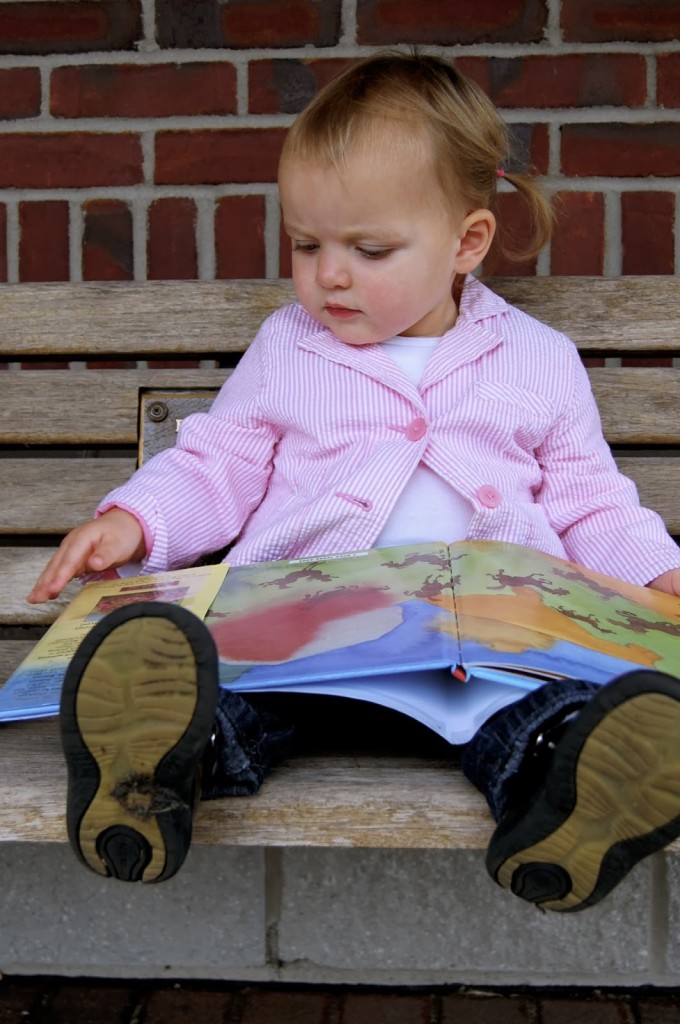In my former life as a kindergarten and 1st grade teacher, I stressed the importance of reading at home to all of my students’ parents. I encouraged them to read with their children each night at for bedtime stories and, in my own experiences as a parent, I’ve tried to follow my advice. After a long day at home, sometimes I just want to turn off the light and walk away. I don’t. I established a standard for bedtime and a promise to spend those last few moments of the day completely engaged in reading to my kids. Regardless of how many hundreds of times I’ve read that Dr. Seuss book, I read it again because bedtime stories are a way for us to connect with books. Here are some reading strategies you can use at home to enhance your bedtime stories routine:
Bedtime Stories Strategies
- Make connections. Studies have shown that children make a deeper, more authentic connection to a book when they can link it to something familiar to them. Help young children find the connections between the book and themselves. Perhaps a character in the book has a favorite stuff animal or takes a trip to visit a loved one. Point out the similarities to your child. As your child gets older, start asking him to make his own connections.
- Interact with the pictures and words. Take some time to stop and really look at the pictures. One of the things that made me crazy as a teacher was when parents told me they hid the pictures from their children. Please don’t do this. Pictures give children clues about the story and help them better understand the characters. Spend time talking with your child about what he sees. For young children, this is a great time to work on things like colors, shapes, and feelings. Point out characters and ask your child how a character is feeling. If the character is sad, ask your child to show you his sad face, too.
- Retell the story. For older children, retelling a book is a great way to check for understanding and sequence of events. Younger kids can do this, too, with prompting. Ask your child to tell you what happened after a specific event in the story. Encourage your child to retell a familiar story just by looking at the pictures.
- Make predictions. Older children can begin making predictions about what will happen in a book. If you are reading to your child, take a moment to pause and ask your child what he thinks will happen next in the story. Obviously, this is best with new books that your child has not read before. Even if the prediction sounds silly, listen to your child’s explanation and reasoning behind his thoughts.
- Give opportunities for visualization. In the digital world in which we all live, it’s easy to have images created for us. We watch TV and movies, and now even books can come alive on our tablets. Children aren’t using their imaginations nearly enough. In my classroom, I did an exercise where I didn’t show the children the pictures in the book I was reading. You would have thought I was stealing their childhood. “WE CAN’T SEE THE PICTURES!” they all cried. Yes, that was the whole point. I wanted them to use their minds to create the pictures themselves. I wanted them to see, feel, and smell the story for themselves. Visualizing can help readers create movies in their minds, which makes them more engaged in the text they are listening to or reading. As adults we know that books are almost always better than what Hollywood produces. Why? Because we use our minds to create the characters ourselves. We can find ourselves so immersed in a book, it’s easy to slip away from our own reality. Give your child an opportunity to do the same. Not only will you stimulate his imagination, you’ll be laying a stronger foundation for reading.
- Tell stories orally. My husband and I have recently started telling our 4-year-old son made-up stories before bed. Each story is uniquely different and usually includes some type of villain. My son loves them. He can’t wait to hear how each story will play out. The other night I was telling him about a robot that was chasing a bad guy. I paused and asked him what the robot looked like and he explained that he was “tall and had one red eye and three arms.” I carried on from there, subtly including the robot’s features as I went along. This concept goes along with the importance of visualization, as my son interprets my stories in his own mind.
Bedtime stories routines should be a time to unwind and spend valuable time together. It is also a great way to show your child the importance of reading. I know reading the same books over and over can seem mundane, but hopefully some of these tips will help you make old books fun again. And if the thought of reading THAT one book, ONE more time makes you want to assume the fetal position in the corner – send it to the highest shelf you can find for a little “vacation.” That’s okay, too.
Tags: bedtime stories









